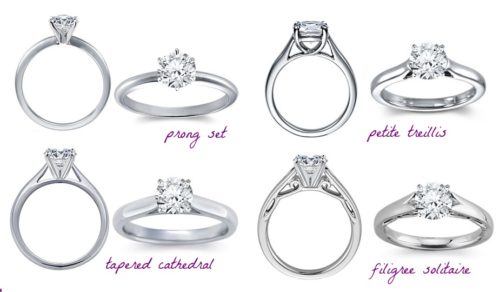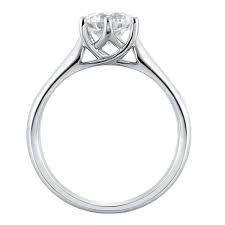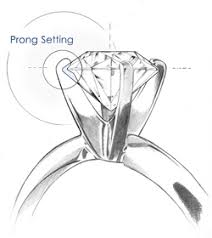
The most common and classic ring setting is called a prong setting. A prong is a little metal claw that grips the diamond tightly, holding it in place. Prongs can be rounded, pointed, flat, or V-shaped (the latter being the most common for princess-cut diamonds). V-shaped prongs are particularly important for wrapping the sharp or pointed corners of the square or rectangular princess-cut diamond.

Most prong settings feature either four, six or eight prongs. Fewer prongs ensure the diamond is more visible, while more prongs will provide better security for the stone. The main advantage is a minimum presence of metal, compared to other settings, ensuring there is more diamond to see thus adding to its brilliance. An added benefit is that more of the diamond is exposed, making cleaning easier.

Prong Setting Drawbacks
The main disadvantage of prongs is that they can snag on clothing, hair, gloves or other materials, especially if they are set high. Scratching other people could also be a problem, as this could also damage the ring. A lower setting can be more practical for women with very active lifestyles.

However, most customers can wear this setting without any problems though it is a good idea to have the prongs inspected from time to time to ensure they have not become loose.

For solitaire rings, this is one of the most popular settings as it draws all of our attention to the stone with minimal distraction. In this case there is no need for additional stones or fancy metalwork on the ring.

